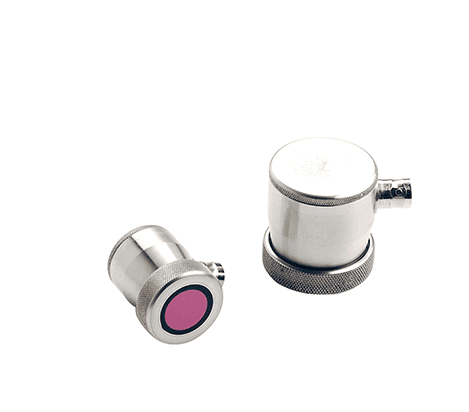
NM01T80601878
SINGLE ELEMENT CONTACT TRANSDUCERS ( SLM ) * HIGH WEAR, 0.75", 2.25 MHz, DAKOTA NDT
The DAKOTA NDT SLM series High Wear Single Element Contact Transducer is a robust and reliable probe designed for general-purpose ultrasonic testing requiring direct contact with the test surface. This specific model features a 0.75" (19.05 mm) diameter element and a frequency of 2.25 MHz. The "HIGH WEAR" designation indicates that this transducer is built with a durable wear face, typically made of hard ceramic and often featuring a stainless steel wear ring, to ensure prolonged service life even on surfaces that may cause more rapid wear on standard transducers.
Key Features:
Single Normal Beam: Standard compression wave contact transducer.
Diameter: 0.75" (19.05 mm) - A versatile size offering a good balance of sensitivity and beam profile.
Frequency: 2.25 MHz - Provides a good balance of penetration and resolution for a variety of materials.
High Wear Face: Hard ceramic wear face for increased durability on various surfaces.
Durable Construction: Typically features a stainless steel case for industrial use.
Connector: Available with various connector types (e.g., BNC, Lemo) to suit different instruments (confirm connector type when purchasing).
Benefits:
Robust Performance: Designed for reliable and consistent results in general contact testing.
Increased Durability: High wear face extends the lifespan of the transducer, especially on abrasive surfaces.
Versatile Application: Suitable for a wide range of materials and inspection tasks.
Good Balance of Sensitivity and Beam Profile: The 0.75" element offers a good compromise for many common inspection requirements.
Effective Penetration and Resolution: The 2.25 MHz frequency provides a strong combination for detecting subsurface discontinuities and measuring material thickness.
Applications:
General-purpose flaw detection in various materials.
Thickness gauging.
Inspection of forgings, castings, and machined parts with relatively smooth to moderately rough surfaces.
Corrosion surveys.
Weld inspection.
Applications where transducer durability is a concern.
